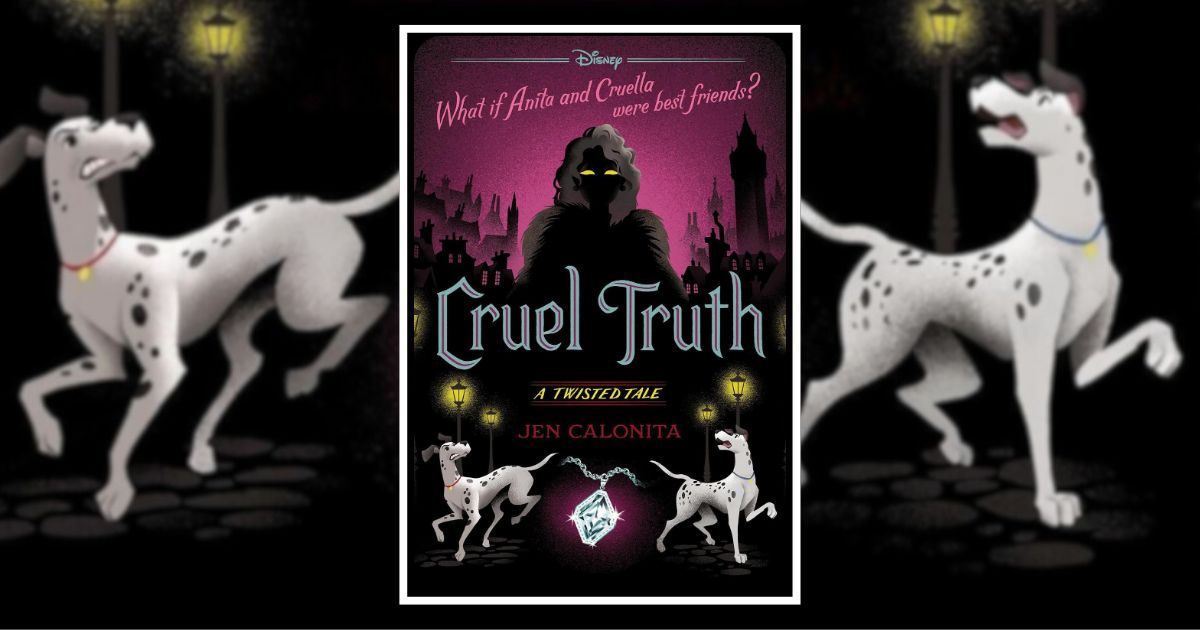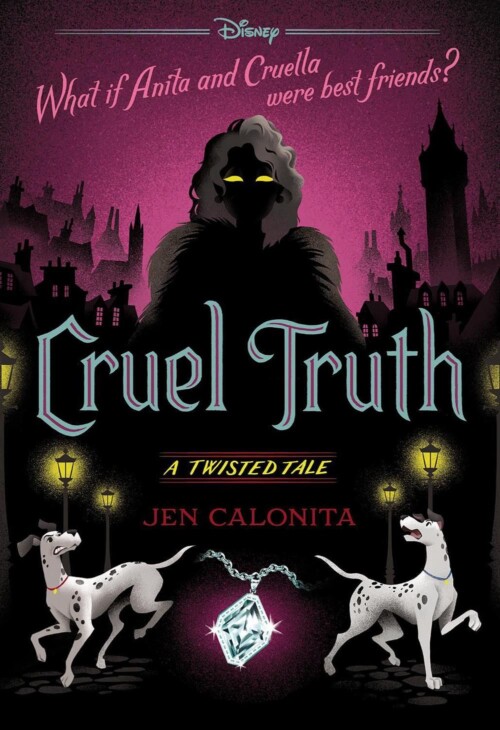Book Review: ‘Cruel Truth’ by Jen Calontia, A Disney Twisted Tale

We all know the story of 101 Dalmatians and how Cruella De Vil wanted to make a fashionable coat out of the skins of Dalmatian puppies. She’s the embodiment of evil, with her desire to exploit the most vulnerable of creatures for nothing more than a vain whim. But why? Why does she have such hatred for these tiny little puppies? Why does she want to wear their skins when a synthetic polka-dotted material could have easily sufficed? Jen Calonita gives Cruella a backstory to help answer those questions in her Disney Twisted Tale Cruel Truth. Cruella remains horribly evil, but is it possible that we can feel sympathy for this twisted woman?
[Warning: My review of Cruel Truth contains some spoilers!]
Cruel truth: villains are created, not born
Everyone has a past, good and bad. But we often don’t think too much about it unless we’re part of it. Nevertheless, what brought them to the present can make all the difference in understanding someone. It’s no different for characters in stories. Especially when it comes to the villains, we rarely think about why they’re evil, we just accept that they are. Most likely they fell out of the evil tree and started running around causing havoc from day one, right?
But what if they didn’t? What if we knew why they did the things they did? It’s become quite popular in recent times to dive into the backstories of villains, to make them sympathetic, or at least more multidimensional.
These more nuanced villains make it difficult to just hate the bad guy, but that’s the point. By making us see that characters aren’t just black and white, but many different shades of gray, we can more easily relate to them. Ultimately, I think it can then carry over into real life, where we can look at people and try to see why they did something. Then we can try to help them and make the world better, instead of just condemning them, labeling them as a lost cause, and forgetting about them.
This Disney Twisted Tale gives Cruella a past
Cruel Truth is billed as a Twisted Tale, a series that takes classic Disney movies and gives the plot some twist to take the story in a new direction. To be honest, Cruel Truth isn’t really a Twisted Tale. The tag line is “What if Anita and Cruella were best friends?” and Calonita takes us back to their high school days (well, the British equivalent) where the two girls meet and become friends.
But the thing is, that’s not a twist. The whole reason that Cruella visits Anita and learns about her puppies in the first place is that they’re old school friends that are visiting. So it’s not a twist really, just a backstory. I don’t think it fits in the Twisted Tale line, but that doesn’t mean I didn’t like it! Jen Calonita lifts Cruella off the page and makes us feel sympathy for her, giving depth to a character that’s always been evil just for the sake of evil.
In Cruel Truth we meet a Cruella, sorry Stella, (Cruella is just a mean nickname that Roger gives Stella) who is just a lonely teenage girl. Her mother died when she was young, and it’s always been her and her father against the world. But now her father has transplanted them to London, sent Stella to a new school, and is starting to keep secrets from her.
Stella is lonely and off-balance, but she can’t let it show. De Vils are never less than perfect. Then she meets Anita. Usually a quiet girl, Anita has a horrible day and blows up at Stella. Stella is shocked that someone actually stands up to her, and instead of getting mad, decides to befriend the puzzling girl.
Both girls are trying to navigate the perils of teenage life and difficult home lives. As they become closer, a tragedy strikes that could end up taking down both their families. Will the two lean on each other and become true best friends, or will their emotional baggage tear them apart? The “cruel truth” is that sometimes it feels easier to just be mean when times get hard.

Complicated Disney villains for a complicated world
I mentioned above that characters used to be black and white. Good guys were very good, down right saintly. And bad guys just fell right off the evil tree and started destroying everything. But the world has gotten more complicated, and our characters have gotten more complicated to reflect that.
First we had the anti-hero, characters that were doing the right thing but maybe not in the right way. It was complicated. We wanted them to win, but we knew that there was a better way to handle the situation. Still, we loved them for trying to do the right thing, and we connected to the pain they felt and the difficult decisions they had to make.
Now the humanized villain is having their time. Story tellers have started to give our villains backstories. And not just a list of all the evil they’ve done, but a complicated history that explains why they do the things they do.
Often we feel so much sympathy for the villain that it’s uncertain who’s actually the bad guy (Thanos was right? Captain America is an outlaw?). This isn’t exactly new territory for writers, we often forget that Frankenstein’s monster was actually seen as the victim by Mary Shelley, even though he killed people and stalked Dr. Frankenstein.
The extent to which we take it now is unprecedented. Every villain has a sad story about why they’re so evil. But overall, this is a good thing. It makes the characters more believable and the stories more engaging. Seeing a little of yourself when you see the bad guy isn’t necessarily a bad thing, it gives a little “but for the grace of god” to your thoughts and helps you to appreciate yourself and your life a little more.
Of course, that doesn’t ever actually excuse their villainous behavior. We all have problems, that doesn’t mean we have to make a coat out of 99 puppies or snap away half the universe.
Cruel Truth has a new take on an old character that works well
I like this new way of exploring characters, and Calonita does a great job of it in Cruel Truth. I feel really bad for Stella. I even get tears a few times thinking about everything she goes through. But Calonita stops short of excusing Stella’s eventual evil.
I feel bad for Stella, but I want to get her a therapist, not let her make her ghastly coat. And that’s exactly how sympathetic villains should be written. You feel bad for them, but you want to heal them, not join them.
My rating for this book: 8/10
Anyone who likes 101 Dalmations will enjoy getting this new glimpse of Stella and be happy for a better reason the villainess would want to make a coat out of puppies than just “fashion”. Learn Cruella De Vil’s Cruel Truth today and enjoy yet another Disney Twisted Tale.
Also check out: Book Review: Sally’s Lament by Mari Mancusi A Twisted Tale


